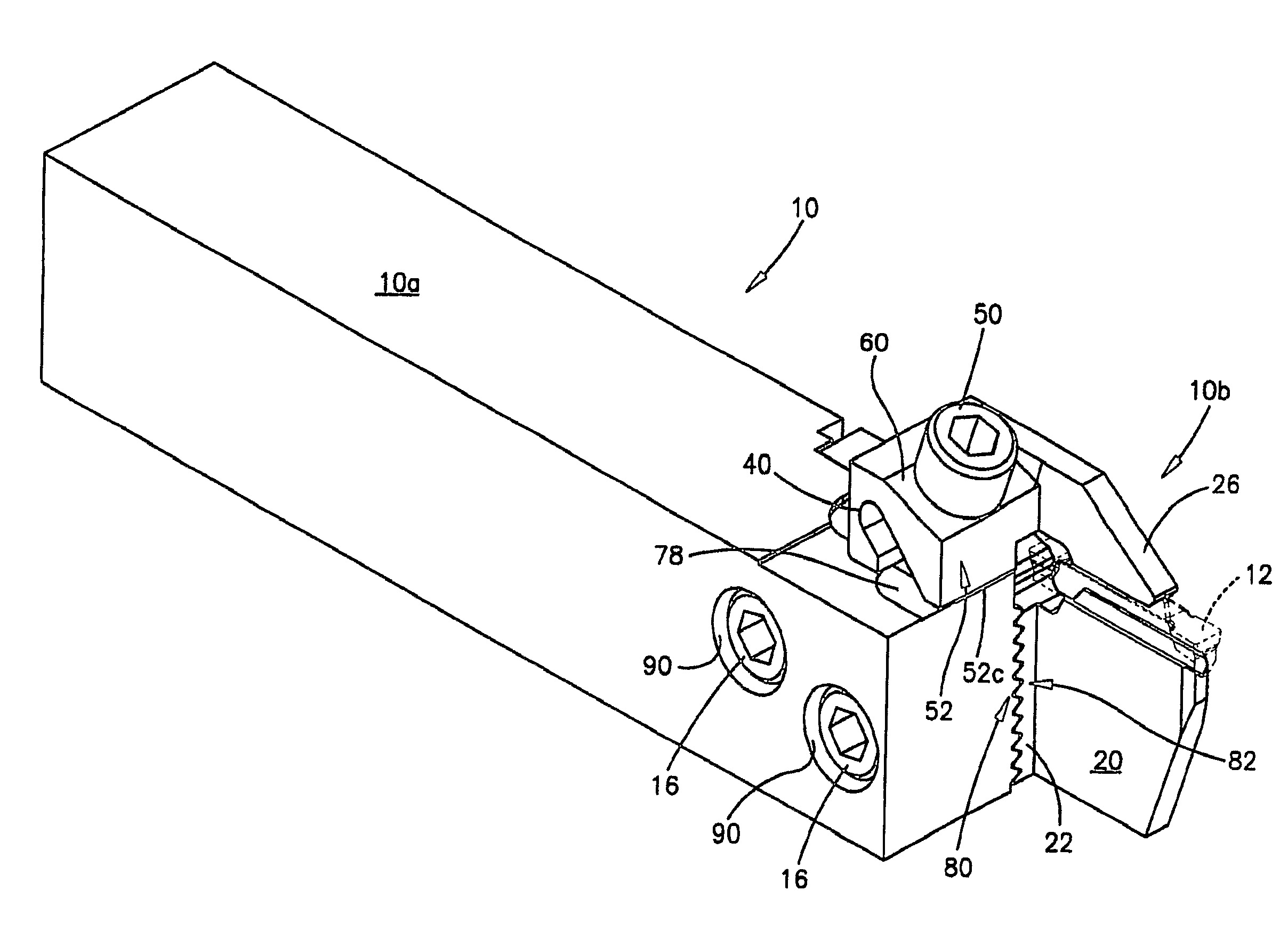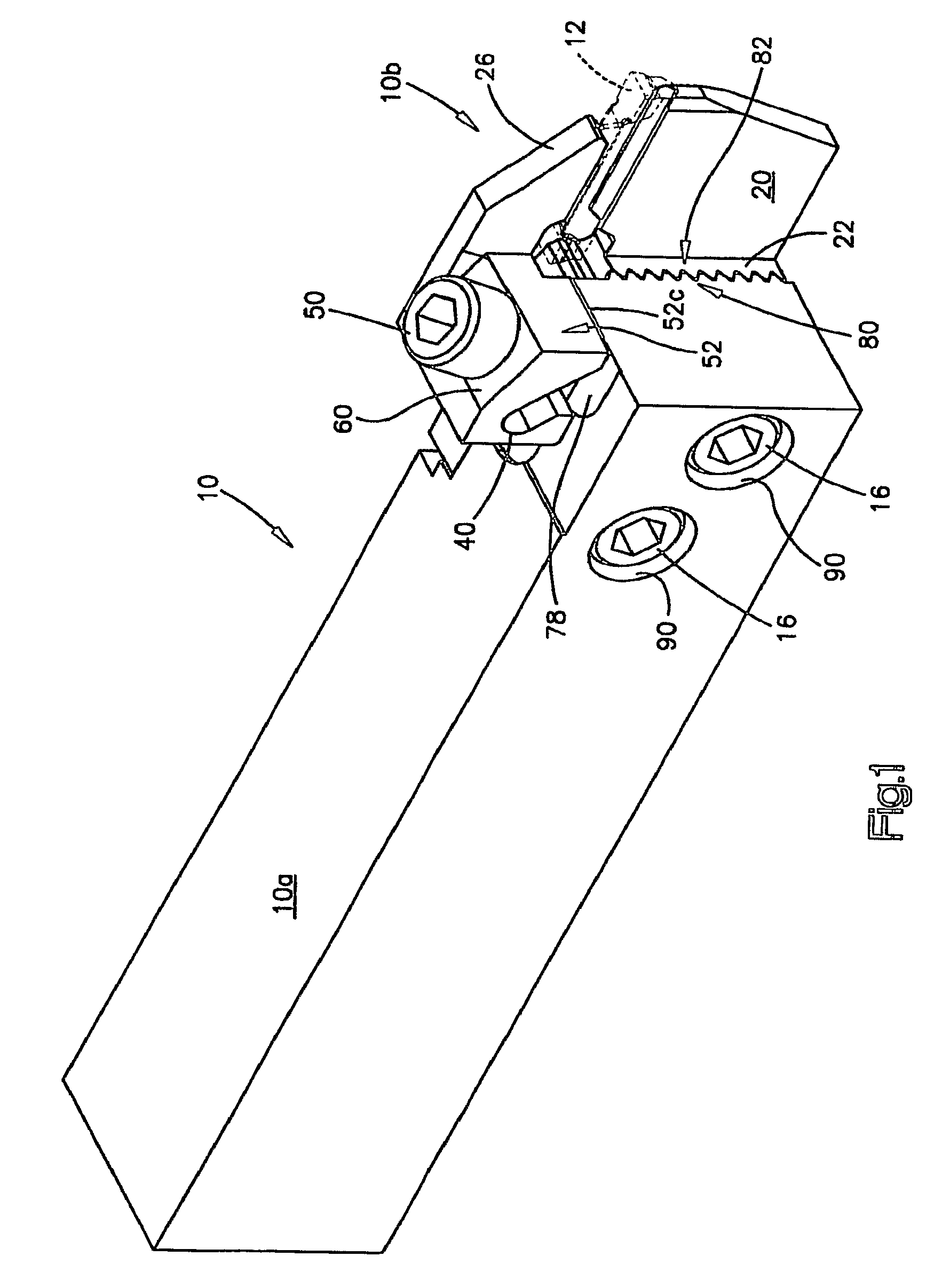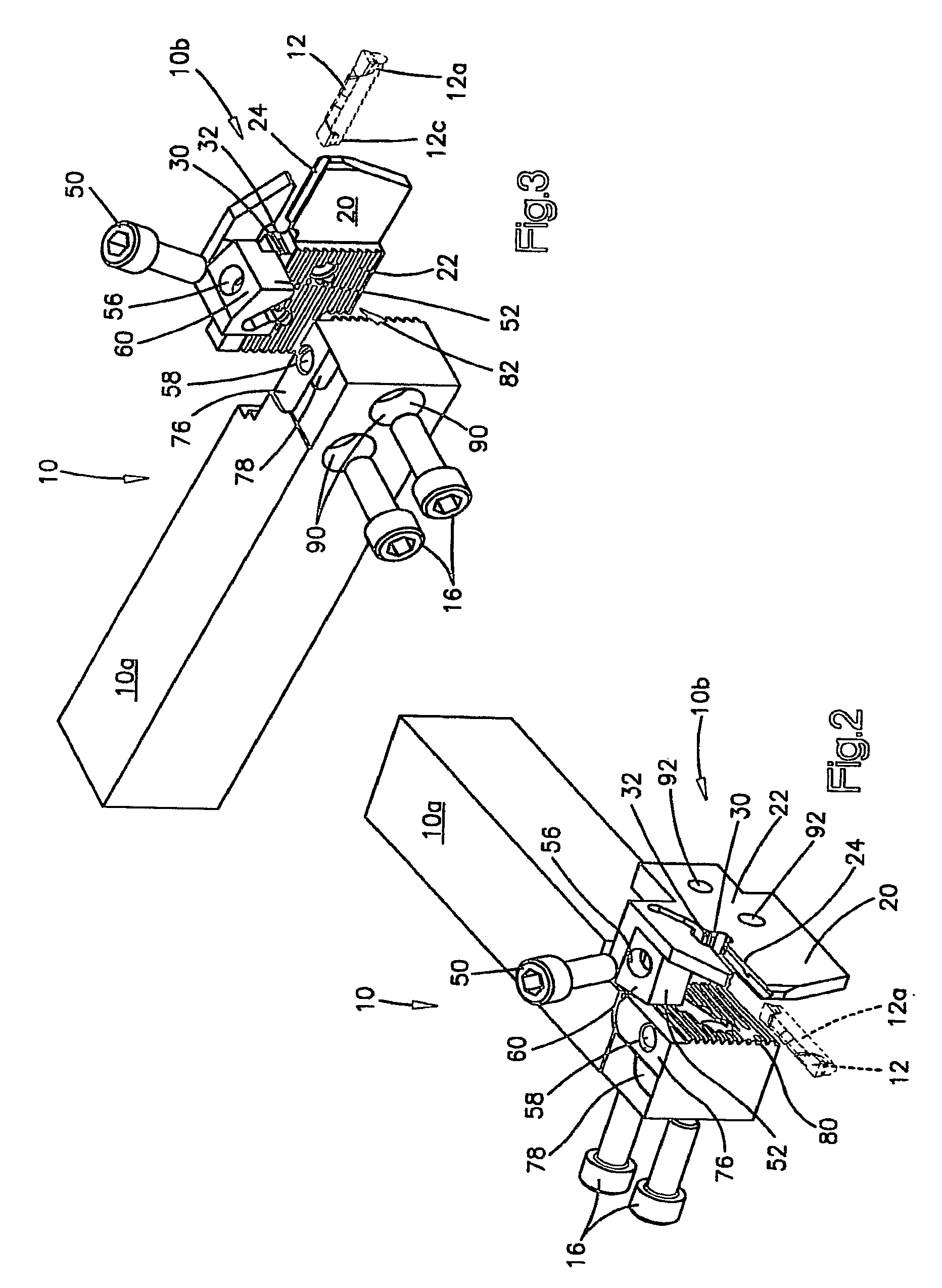Tool holder assembly
a tool holder and tool technology, applied in the direction of shaping cutters, manufacturing tools, cutting inserts, etc., can solve the problems of loss of performance, bulky and difficult to use machine tools, and the existing system is more economical, so as to prevent the rollover of the clamping area
- Summary
- Abstract
- Description
- Claims
- Application Information
AI Technical Summary
Benefits of technology
Problems solved by technology
Method used
Image
Examples
Embodiment Construction
[0022]FIG. 1 illustrates the overall construction of a tool holder assembly 10 constructed in accordance with a preferred embodiment of the invention. The tool holder assembly 10 is used to support a cutting insert 12 in a machining position with respect to a workpiece (not shown). The tool holder assembly includes a bar-like tool holder 10a which is suitably mounted or attached to a machine tool. Typically, the tool holder 10a is secured to a “pocket” of a turret that forms part of the machine tool. This enables the tool holder assembly 10 and hence the associated cutting insert 12 to be moved to various positions in order to perform cutting operations on a rotating workpiece such as bar or tube stock (not shown).
[0023]In accordance with the invention, a cutting insert support / clamp indicated generally by the reference character 10b is removably secured to the tool holder 10a by a pair of socket bolts 16. Referring also to FIGS. 2 and 3, the insert support / clamp 10b is of the blade...
PUM
| Property | Measurement | Unit |
|---|---|---|
| angles | aaaaa | aaaaa |
| clamping forces | aaaaa | aaaaa |
| force | aaaaa | aaaaa |
Abstract
Description
Claims
Application Information
 Login to View More
Login to View More - R&D
- Intellectual Property
- Life Sciences
- Materials
- Tech Scout
- Unparalleled Data Quality
- Higher Quality Content
- 60% Fewer Hallucinations
Browse by: Latest US Patents, China's latest patents, Technical Efficacy Thesaurus, Application Domain, Technology Topic, Popular Technical Reports.
© 2025 PatSnap. All rights reserved.Legal|Privacy policy|Modern Slavery Act Transparency Statement|Sitemap|About US| Contact US: help@patsnap.com



